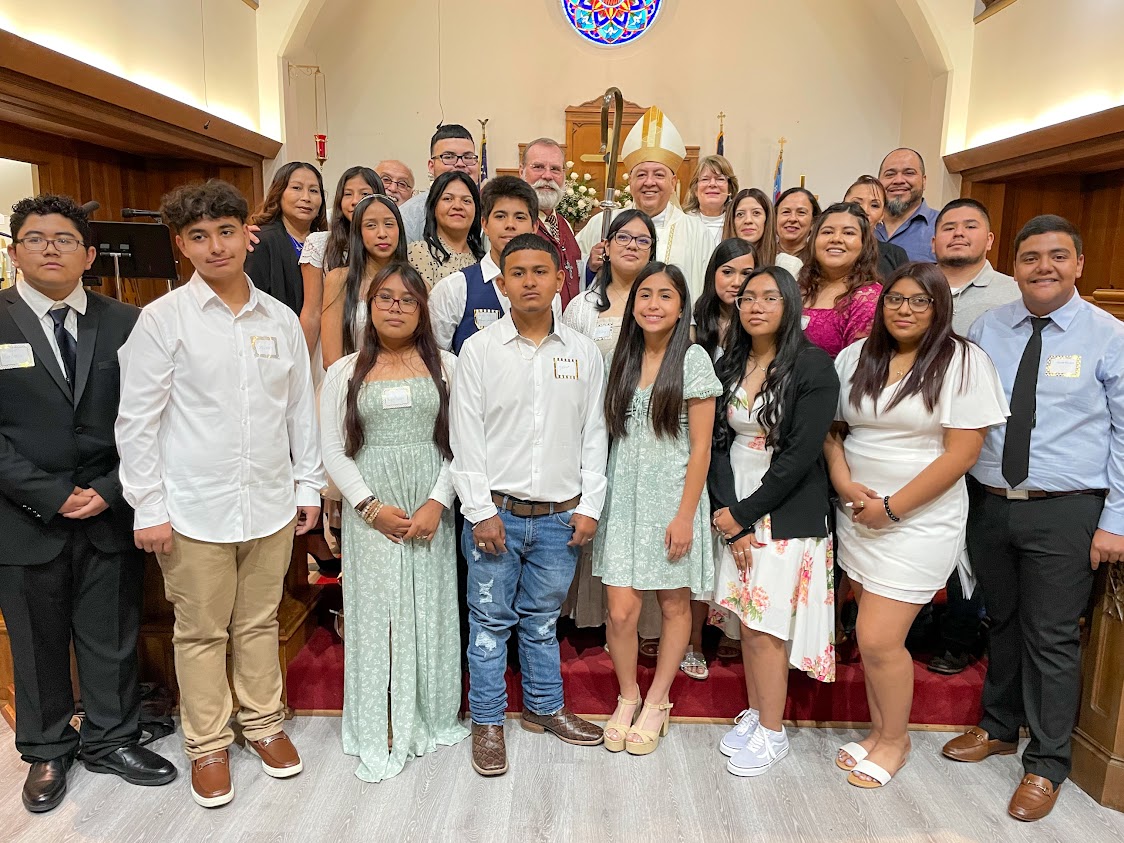St. Paul’s Episcopal Church, Houston, was born in the Langhammer home in the summer of 1919 by 15 Episcopalians. Worship services were held at Park Place Elementary school until 1924 when the first building site was secured at 8031 Park Place Blvd. This site was moved to its current site (7843 Park Place Blvd) to make way for the Gulf freeway. The first church building was completed in 1937, and the education buildings were dedicated on October 19, 1953.
In 1995, the first service in the Spanish language was held and St. Paul’s/San Pablo Episcopal church was reborn. Since then, the church has grown and expanded its mission field in this area of southeast Houston.
Present at the celebration was the last living daughter of one of the founding families. Peggy Fleissner, 91, was baptized, confirmed, and married at this church. All her children were also baptized, confirmed, and married at this church. When Peggy was 3 years old, they had finished the new church but the cement in the chancel was still wet, and meanwhile, 40 Episcopalians walked from their old location to the new church for services. Once they arrived and realized that the chancel was wet, they all took off their shoes and stood on the wet cement to leave their footprints. Now, covered by carpeting, Peggy’s footprints, along with her parents are still there along with these first Episcopalians who first launched a church in this area.
There are many more stories of faithful parishioners and clergy who labored in this mission field over the last century. All of these stories are around the purpose of preaching the Word of God and building the Kingdom of God. The work continues as we celebrated on April 30, 2023, this centennial along with 27 newly-confirmed and received at the hands of our regional Bishop Hector Monterroso.
St. Paul’s/San Pablo’s motto and mission statement has been for many years, “Open hearts and open doors – receiving everyone who is seeking to know Christ”. This mission continues.

